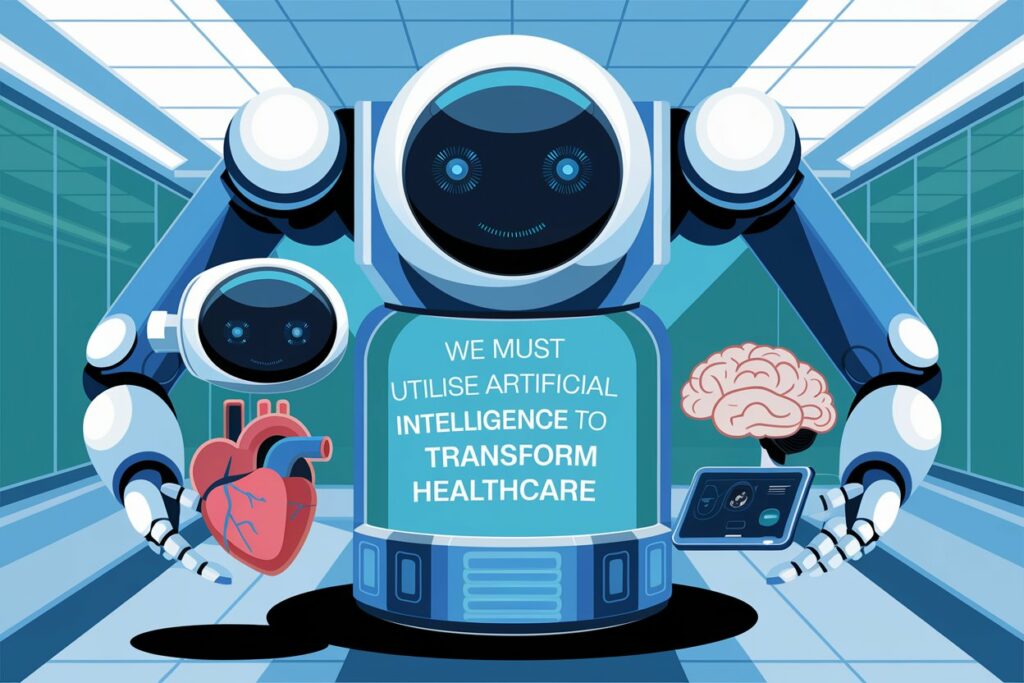
Prince Thakur
7 months ago
We must utilise artificial intelligence to transform healthcare
Artificial intelligence (AI) can be utilised in almost all aspects of healthcare, from diagnosis and treatment to streamlining daily administrative work. The US is at the forefront of exploring the potential of AI in healthcare, and Cleveland, Houston, and Boston are the major cities where new AI-driven technologies are being designed and tested. Other countries like China, the UK, Israel, South Korea, Japan, and Germany are also heavily investing in AI tools and applications.

AI can take a prominent role in operating rooms. In surgical procedures, like knee and hip surgeries, AI-operated robots can perform minimally invasive operations that reduce recovery times, minimise scarring, and lead to overall better health outcomes. Globally, California-based Intuitive Surgical's AI-powered robot da Vinci Surgical System, operating in about 70 countries, has performed 10 million procedures since its release in 2000. The system combines advanced robotics, high-definition 3D visualisation, and equipment that mimics the movement of a surgeon's hand but with greater precision and accuracy. Indeed, robotic surgery has already become a major global market, with a projected growth of $83 billion by 2032.
AI has also shown remarkable capabilities in diagnosis and personalised treatment. AI technologies now analyse radiological images with accuracy levels that rival or exceed human limits. While it might take a radiologist minutes or longer to analyse a single scan, an AI tool takes only seconds to review hundreds of scans more accurately! AI mechanisms can also discover small fractures and anomalies in medical images that human experts may miss. It can identify conditions like breast cancer and lung diseases more precisely than clinicians. Analysing genetic information, lifestyle factors, and environmental data, AI tools can recommend personalised medication. This precision medicine approach is vital in oncology where tailored treatment is often recommended based on the patient's genetic profile.
Beyond surgeries and cancer detection, AI algorithms can also provide predictive analysis based on patients' lifestyle, environmental, and behavioural data. For example, an AI algorithm can track a patient's exposure to pollutants, and changes in vital signs, and predict the likelihood of developing conditions like asthma and heart disease. The algorithms can detect early signs of neurological disorders, diabetes, and heart failure, allowing early intervention to prevent illness, emergency department visits, and readmissions.
AI is also widely used in remote monitoring, telemedicine, and virtual assistance around the clock. Almost all wearable devices, such as smartwatches, fitness trackers, smart glasses, wearable electrocardiogram (ECG) monitors, bio-stickers, and smart rings, have built-in AI applications. These tools can perform vital tasks such as tracking patient heart rates, sleep patterns, respiratory rate, activity and stress levels, and send data to providers in real-time. This ease of data collection helps manage chronic diseases and ensure timely response to emergencies. AI-run virtual assistance programmes are often equipped with 24/7 patient counselling, medication reminders, and follow-up check-ins.
Even though AI-powered devices can revolutionise healthcare, there are significant challenges in implementing its solutions. A major barrier is the integration and interoperability of AI tools into the existing capabilities, infrastructure, and electronic health records (EHR) systems. Currently, Bangladesh is taking only the first steps towards digitising healthcare by incorporating some web-based and mobile applications to make appointments, doctor visits, deliver drugs, and process transactions. Of course, challenges with interoperability can be overcome by training physicians on the usage of AI tools, as well as market-driven competition by technology vendors. Effective use of AI requires that clinicians understand how to interpret AI outputs and integrate them into decision-making processes. Bridging the knowledge gap is an important first step to implementing AI technologies. Read More.